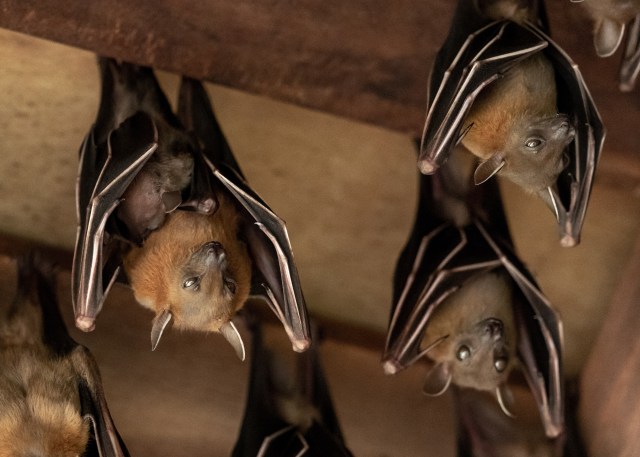
Bats have long been associated with darkness and mystery. These fascinating creatures have a unique ability to navigate and perceive their surroundings through echolocation, allowing them to “see” the world in a very different way from humans and other animals. In this article, we’ll uncover the secrets of how bats perceive their environment and explore the world through their eyes.
The power of echolocation
Echolocation is a remarkable sensory system that bats use to navigate, hunt prey, and avoid obstacles in complete darkness. By emitting high-frequency sounds beyond the range of human hearing, bats can detect objects around them based on how these sounds bounce around. This ability allows them to create mental maps of their surroundings, allowing them to fly effortlessly even in complete darkness.
Bats emit these ultrasonic sounds through their mouths or noses when flying or roosting. The sound waves then propagate outward until they strike an object, at which point they bounce back as echoes. By analyzing the time it takes for these echoes to return and interpreting their intensity and direction, bats can accurately determine the location, size, shape and texture of nearby objects.
To understand how bats see the world through echolocation, we must first understand how they interpret sound waves. Bats have specialized structures in their ears that allow them to process high-frequency sounds with incredible precision. These structures are adapted to capture even the faintest echoes from surrounding objects.
When bats emit ultrasonic calls, they listen carefully for the echoes using their highly sensitive ears. By analyzing variations in echo intensity and temporal differences between the two ears, they can pinpoint the exact locations of objects relative to themselves. This process happens so quickly that bats can perceive real-time changes in their environment while flying at high speeds.
Map their environment
Bats create mental maps by combining information gathered from their echolocation calls and the resulting echoes. These maps give them a comprehensive understanding of their environment, allowing them to easily navigate through complex landscapes.
When bats emit their ultrasonic calls, they focus on specific areas of interest. By adjusting the frequency and amplitude of these calls, they can refine their perception and gather more detailed information about a particular object or area. This ability helps them identify potential prey, avoid obstacles, and locate suitable perches.
A window to a hidden world
By exploring the world through the eyes of a bat, we gain a new perspective on how animals adapt to different environments. Bats’ unique echolocation abilities allow them to thrive in habitats where other animals would struggle. From dense forests to pitch-black caves, bats effortlessly navigate these difficult terrains using their exceptional sensory systems.
Understanding how bats perceive their environment can also inspire technological advances. Scientists and engineers have studied bat echolocation for years, looking for ways to apply this knowledge in various fields such as robotics and sonar technology.
In conclusion, uncovering the secrets of how bats perceive the world through echolocation reveals a fascinating ability that sets them apart from other creatures. By emitting ultrasonic sounds and interpreting the returned echoes, bats create mental maps that allow them to effortlessly navigate complex environments. Exploring the world through the eyes of a bat not only highlights its remarkable capabilities, but also opens the door to innovative applications in technology and research.
This text was generated using a large language model, and selected text has been edited and moderated for purposes such as readability.
